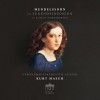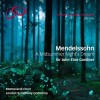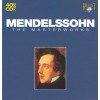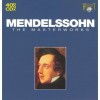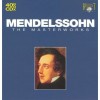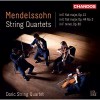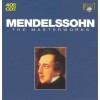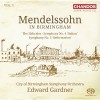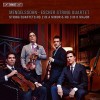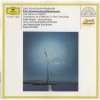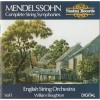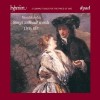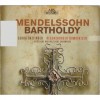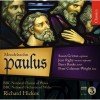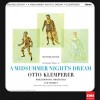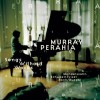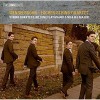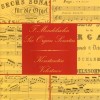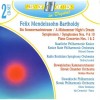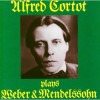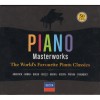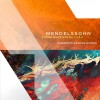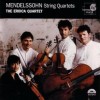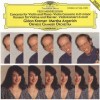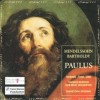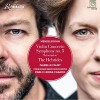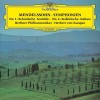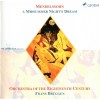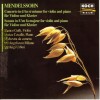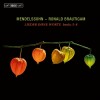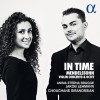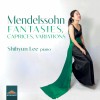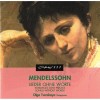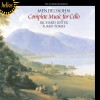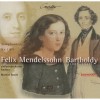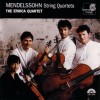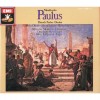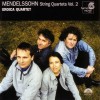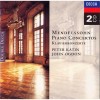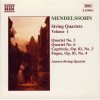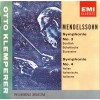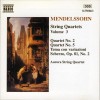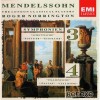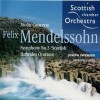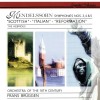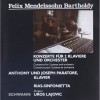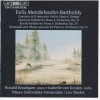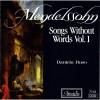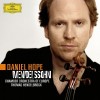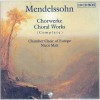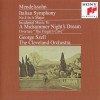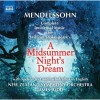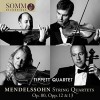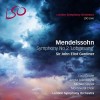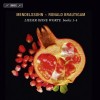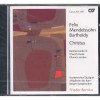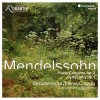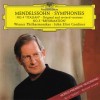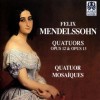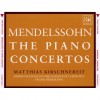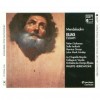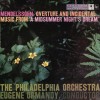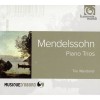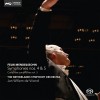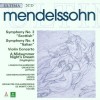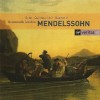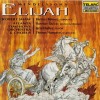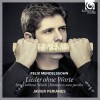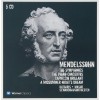| Country: | Germany |
| Period: | Romantique |
Biography
Childhood
Mendelssohn was born in Hamburg, Germany, the son of a banker, Abraham Mendelssohn (who later changed his surname to Mendelssohn Bartholdy, and who was himself the son of the German Jewish philosopher Moses Mendelssohn), and of Lea Salomon, a member of the Itzig family and the sister of Jakob Salomon Bartholdy.
Felix grew up in an environment of intense intellectual ferment. The greatest minds of Germany were frequent visitors to his family's home in Berlin, including Wilhelm von Humboldt and Alexander von Humboldt. His sister Rebecca married the Belgian mathematician Lejeune Dirichlet.
Abraham renounced the Jewish religion; his children were first brought up without religious education, and were baptised as Christians in 1816 (at which time Felix took the additional names Jakob Ludwig – Abraham and his wife were not themselves baptised until 1822.) The name Bartholdy was assumed at the suggestion of Lea's brother, Jakob, who had purchased a property of this name and adopted it as his own surname. Abraham was later to explain this decision in a letter to Felix as a means of showing a decisive break with the traditions of his father Moses: "There can no more be a Christian Mendelssohn than there can be a Jewish Confucius". Felix did not entirely drop the name Mendelssohn as requested but in deference to his father signed his letters and had his visiting cards printed using the form "Mendelssohn Bartholdy".
The family moved to Berlin in 1811. Abraham and Lea Mendelssohn sought to give Felix, his brother Paul, and sisters Fanny and Rebecca, the best education possible. His sister Fanny Mendelssohn (later Fanny Hensel), became a well-known pianist and amateur composer; originally Abraham had thought that she, rather than her brother, might be the more musical. However, at that time, it was not considered proper (by either Abraham or Felix) for a woman to have a career in music, so Fanny remained an amateur musician. Six of her early songs were later published (with her consent) under Felix's name.
Like Wolfgang Amadeus Mozart before him, Mendelssohn was regarded as a child prodigy. He began taking piano lessons from his mother when he was six, and at seven was tutored by Marie Bigot in Paris. From 1817 he studied composition with Carl Friedrich Zelter in Berlin. This was an important influence on his future career. Zelter had almost certainly been recommended as Felix's teacher by his aunt Sarah Levy, who had been a pupil of W. F. Bach and a patron of C. P. E. Bach and was a talented keyboard player in her own right, often playing with Zelter's orchestra at the Berlin Singakademie (of which she and the Mendelssohn family were leading patrons). Sarah had formed an important collection of Bach family manuscripts which she bequeathed to the Singakademie; Zelter, whose tastes in music were conservative, was also an admirer of the Bach tradition. This undoubtedly played a significant part in forming Felix Mendelssohn's conservative musical tastes. Mendelssohn's own works show his study of Baroque and early classical music. His fugues and chorales especially reflect a tonal clarity and use of counterpoint reminiscent of Johann Sebastian Bach, by whose music he was deeply influenced.
Early maturity
Felix probably made his first public concert appearance at the age of nine, when he participated in a chamber music concert accompanying a horn duo. He was also a prolific composer from an early age. As an adolescent, his works were often performed at home with a private orchestra for the associates of his wealthy parents amongst the intellectual elite of Berlin. Between the ages of 12 and 14, Mendelssohn wrote twelve string symphonies. These works were ignored for over a century, but are now recorded and occasionally played in concerts. He wrote his first published work, a piano quartet, by the time he was thirteen. (It was probably Abraham Mendelssohn who procured the publication of this work by the house of Schlesinger). In 1824, at age 15, he wrote his first symphony for full orchestra (in C minor, Op. 11). At the age of 16 he wrote his String Octet in E-flat major, the first work which showed the full power of his genius. This Octet and his Overture to Shakespeare's A Midsummer Night's Dream, which he wrote a year later, are the best known of his early works. (He wrote incidental music for the play 16 years later in 1842, including the famous Wedding March.) The Overture is perhaps the earliest example of a 'concert overture',[9] (i.e. a piece not written deliberately to accompany a staged performance, but to evoke a literary theme in performance on a concert platform), a genre which was to become a popular form in musical Romanticism.
In 1824 Felix took lessons from the composer and piano virtuoso Ignaz Moscheles who however confessed in his diaries that he had little to teach him. Moscheles became a close colleague and lifelong friend.
1827 saw the premiere—and sole performance in his lifetime—of Mendelssohn's opera, Die Hochzeit des Camacho. The failure of this production left him disinclined to venture into the genre again.
Besides music, Mendelssohn's education included art, literature, languages, and philosophy. He was a skilled artist in pencil and watercolour, he could speak (besides his native German) English, Italian, and Latin, and he had an interest in classical literature; Felix translated Terence's Andria for his tutor Heyse in 1825 — Heyse was impressed and had it published in 1826 as a work of 'his pupil, F***'
This translation also qualified Mendelssohn to study at the University of Berlin, where he attended from 1826 to 1829 lectures on aesthetics by Hegel, on history by Eduard Gans and on geography by Carl Ritter.
Goethe
In 1821 Zelter introduced Mendelssohn to his friend and correspondent, the elderly Goethe, who was greatly impressed by the child, leading to perhaps the earliest confirmed comparison with Mozart in the following conversation with Zelter:
Musical prodigies are probably no longer so rare; but what this little man can do in extemporizing and playing at sight borders the miraculous. and I could not have believed it possible at so early an age." "And yet you heard Mozart in his seventh year at Frankfurt?" said Zelter. "Yes", answered Goethe, "but what your pupil already accomplishes, bears the same relation to the Mozart of that time, that the cultivated talk of a grown-up person bears to the prattle of a child"
Felix was invited to meet Goethe on several later occasions and set a number of his poems to music; other of his compositions inspired by Goethe include the overtures Meeresstille und glückliche Fahrt (Calm Sea and a Prosperous Voyage, Op. 27, 1828) and the cantata Die erste Walpurgisnacht (The First Walpurgis Night, Op. 60, 1832).
Revival of St. Matthew Passion
In 1829, with the backing of Zelter and the assistance of a friend, the actor Eduard Devrient, Mendelssohn arranged and conducted a performance in Berlin of Bach's St Matthew Passion. The orchestra and choir were provided by the Berlin Singakademie. The success of this performance (the first since Bach's death in 1750) was an important element in the revival of J.S. Bach's music in Germany and, eventually, throughout Europe. It earned Mendelssohn widespread acclaim at the age of twenty. It also led to one of the very few references which Mendelssohn ever made to his origins: 'To think that it took an actor and a Jew's son (Judensohn) to revive the greatest Christian music for the world!' (cited by Devrient in his memoirs of the composer).
Early career
On the death of Zelter in 1832, Mendelssohn had some hopes of becoming the conductor of the Berlin Singakademie. However, at a vote in January 1833 he was defeated for the post by the less distinguished Karl Rungenhagen. This may have been because of Mendelssohn's youth, and fear of possible innovations; it was also suspected by some to be on account of his Jewish ancestry. Following this rebuff, Mendelssohn divided most of his professional time over the next few years between England and Düsseldorf, where he was appointed musical director in 1833. In the spring of that year he directed the Lower Rhein Music Festival, commencing it with a performance of Handel's oratorio Israel in Egypt prepared from the original score which he had found in London. This may be regarded as the start of a Handel revival in Germany begun by Mendelssohn, much as he had reawakened interest in JS Bach. Mendelssohn worked with the dramatist Karl Immermann to improve local theatre standards, and made his first appearance as an opera conductor in Immermann's production of Mozart's Don Giovanni at the end of 1833, when he took umbrage at the audience's protests about the cost of tickets. His frustration at his quotidian duties in Düsseldorf, and its provincialism, led him to resign his position at the end of 1834.
Mendelssohn in Britain
In 1829 Mendelssohn paid his first visit to Britain, where Moscheles, already settled in London, introduced him to influential musical circles. He had a great success, conducting his First Symphony and playing in public and private concerts. In the summer he visited Edinburgh and became a friend of the composer John Thomson. On subsequent visits he met with Queen Victoria and her musical husband Prince Albert, both of whom were great admirers of his music. In the course of ten visits to Britain during his life, totalling about 20 months he won a strong following, sufficient for him to make a deep impression on British musical life. Not only did he compose and perform, but he also edited for British publishers the first critical editions of oratorios of Handel and of the organ music of JS Bach. Scotland inspired two of his most famous works, the overture Fingal's Cave (also known as the Hebrides Overture) and the Scottish Symphony (Symphony No. 3). His oratorio Elijah was premiered in Birmingham at the Triennial Music Festival on August 26, 1846. On his last visit to England in 1847 he was the soloist in Beethoven's Piano Concerto no. 4 and conducted his own Scottish Symphony with the Philharmonic Orchestra before the Royal couple.
Leipzig
In 1835, Felix was appointed as conductor of the Leipzig Gewandhaus Orchestra. This appointment was extremely important for him; he felt himself to be a German and wished to play a leading part in his country's musical life. In its way it was a redress for his disappointment over the Singakademie appointment. Despite efforts by the king of Prussia to lure him to Berlin, Mendelssohn concentrated on developing the musical life of Leipzig, working not only with the orchestra but with the opera house, the Choir of St. Thomas Church, Leipzig and the city’s other choral and musical institutions. Concerts given by Mendelssohn included, apart from many of his own works, three series of ‘historical concerts’ and a number of works by his contemporaries. Mendelssohn was deluged by offers of music from rising composers and would-be composers; amongst these was Richard Wagner who submitted his early Symphony, which (to Wagner’s disgust) Mendelssohn lost or mislaid. Mendlessohn was also able to revive interest in the work of Franz Schubert. Schumann discovered the manuscript of Schubert's Ninth Symphony and sent it to Mendelssohn who promptly premiered it in Leipzig on March 21, 1839, more than a decade after the composer's death.
A landmark event during Mendelssohn’s Leipzig years was the premier of his oratorio St. Paul which was given at the Lower Rhine Festival in Düsseldorf in 1836, shortly after the death of the composer’s father, which much affected him. St. Paul seemed to many of Felix’s contemporaries to be his finest and most outstanding work, and set the seal on his European reputation. The sceptics included Heinrich Heine who wrote of the work’s ‘finest, cleverest calculation, sharp intelligence and, finally, complete lack of naïveté. But is there in art any originality of genius without naïveté?’ — anticipating Wagner and many of Mendelssohn’s later critics who attacked the composer’s supposed glibness.
In the Berlin of Friedrich Wilhelm IV
Friedrich Wilhelm IV came to the Prussian throne in 1840 with ambitions to develop Berlin as a cultural centre. This included the establishment of a music school and reform of music for the church. The obvious choice to head these reforms was Mendelssohn, who was however reluctant to undertake the task, a reluctance perhaps associated with earlier disappointments in the city, especially in the light of his existing strong position in Leipzig. Although Mendelssohn did spend some time in Berlin, writing some church music and also, at the King’s request, music for a production of Sophocles’s Antigone, the funds for the school never materialised and various of the promises (in terms of finance, title and concert programming) made to Mendelssohn by the court were broken. He was therefore not displeased to have the excuse to return to Leipzig.
The Leipzig Conservatory
In 1843, however Mendelssohn did found a major music school, the Leipzig Conservatory, where he persuaded Ignaz Moscheles and Robert Schumann to join him; other prominent musicians, including the string players Ferdinand David and Joseph Joachim, and the music theorist Moritz Hauptmann also became staff members. After Mendelssohn's death in 1847, his conservative tradition was carried on when Moscheles succeeded him as head of the Conservatory.
Personal life
Mendelssohn was an enthusiastic amateur artist, including drawing, watercolors, and oil painting. His enormous correspondence shows that he could also be a witty writer in German and English — sometimes accompanied by humorous sketches and cartoons in the text.
Although the image was cultivated, especially after his death, of a man always equable, happy and placid in temperament, he was however often given to alarming fits of temper which occasionally led to collapse. On one occasion in the 1830s for example, when his wishes had been crossed "his excitement was increased so fearfully that when the family was assembled he began to talk incoherently, and in English, to the great terror of them all. The stern voice of his father at last checked the wild torrent of words; they took him to bed, and a profound sleep of twelve hours restored him to his normal state". Such fits may be related to his early death.
Mendelssohn married Cécile Jeanrenaud, the daughter of a French Protestant clergyman, on March 28, 1837. The couple had five children: Carl, Marie, Paul, Lilli and Felix. The youngest child, Felix, contracted measles in 1844 and was left with his health impaired; he died young, in 1851. The eldest, Carl, became a distinguished historian, and professor of history at Heidelberg and Freiburg universities, dying in 1897. Paul Mendelssohn Bartholdy (1841–1880) was a noted chemist and pioneered the manufacture of aniline dye. Marie married Victor Benecke and lived in London. Lili married Adolphe Wach, later Professor of Law at Leipzig University. Cécile died less than six years after her husband, on 25 September 1853.
Jenny Lind
In general Mendelssohn's personal life seems to have been fairly conventional compared to his contemporaries Wagner, Berlioz, and Schumann — save as regards his ambiguous relationship with the famed Swedish soprano Jenny Lind, whom he met in October 1844. An affidavit from Lind's husband, Otto Goldschmidt, which is currently held in the archive of the Mendelssohn Scholarship Foundation at the Royal Academy of Music in London, reportedly describes Mendelssohn's 1847 request for Lind (who was then not married) to elope with him to America. The affidavit, though unsealed, is currently unreleased by the Mendelssohn Scholarship Foundation, despite requests to make it public. Mendelssohn met and worked with Lind many times, and wrote the beginnings of an opera, Lorelei, for her, based on the legend of the Lorelei Rhine maidens; the opera was unfinished at his death. He is said to have included a high F-sharp in his oratorio Elijah ("Hear Ye Israel") with Lind's voice in mind, although she did not in fact sing this part until after his death, at a concert in December 1848. In 1847 Mendelssohn attended a London performance of Meyerbeer's Robert le diable —an opera which musically he despised— in order to hear Lind's British debut, in the role of Alice. His friend the critic Chorley, who was with him, wrote 'I see as I write the smile with which Mendelssohn, whose enjoyment of Mdlle. Lind's talent was unlimited, turned round and looked at me,as if a load of anxiety had been taken off his mind. His attachment to Mlle. Lind's genius as a singer was unbounded, as was his desire for her success'.
Mercer-Taylor writes that although there is no currently available hard evidence of a physical affair between the two, "absence of evidence is not evidence of absence." Clive Brown writes that "it has been rumoured that the papers tend to substantiate the notion of an affair between Mendelssohn and Lind, though with what degree of reliability must remain highly questionable."
Upon Mendelssohn's death Lind wrote, "[He was] the only person who brought fulfillment to my spirit, and almost as soon as I found him I lost him again." In 1869 Lind erected a plaque in Mendelssohn's memory at his birthplace in Hamburg; in 1849 she had set up the Mendelssohn Scholarship Foundation, which makes an award to a British resident young composer every two years in Mendelssohn's memory. The first winner of the scholarship (in 1856), was Arthur Sullivan, then aged 14.
Death
Mendelssohn suffered from bad health in the final years of his life, probably aggravated by nervous problems and overwork. The death of his sister Fanny on May 14, 1847 caused him great distress. Less than six months later, on November 4, Felix himself died in Leipzig after a series of strokes. His grandfather Moses, his sister Fanny and both his parents had died from similar apoplexies. His funeral was held at the Paulinerkirche and he is buried in the Trinity Cemetery in Berlin-Kreuzberg.
Contemporaries
Throughout his life Mendelssohn was wary of the more radical musical developments undertaken by some of his contemporaries. He was generally on friendly, if somewhat cool, terms with the likes of Hector Berlioz, Franz Liszt, and Giacomo Meyerbeer, but in his letters expresses his frank disapproval of their works.
In particular, he seems to have regarded Paris and its music with the greatest of suspicion and an almost Puritanical distaste. Attempts made during his visit there to interest him in Saint-Simonianism ended in embarrassing scenes. He thought the Paris style of opera vulgar, and the works of Meyerbeer insincere. When Ferdinand Hiller suggested in conversation to Felix that he looked rather like Meyerbeer (they were distant cousins, both descendants of Rabbi Moses Isserlis), Mendelssohn was so upset that he immediately went to get a haircut to differentiate himself. It is significant that the only musician with whom he was a close personal friend, Moscheles, was of an older generation and equally conservative in outlook. Moscheles preserved this outlook at the Leipzig Conservatory until his own death in 1870.
Reputation
This conservative strain in Mendelssohn, which set him apart from some of his more flamboyant contemporaries, bred a similar condescension on their part toward his music. His success, his popularity and his Jewish origins irked Richard Wagner sufficiently to damn Mendelssohn with faint praise, three years after his death, in an anti-Jewish pamphlet Das Judenthum in der Musik. This was the start of a movement to denigrate Mendelssohn's achievements which lasted almost a century, the remnants of which can still be discerned today amongst some writers. The Nazi regime was to cite Mendelssohn's Jewish origin in banning performance and publication of his works. Charles Rosen, in his book The Romantic Generation, disparages Mendelssohn's style as "religious kitsch", such opinion reflecting a continuation of the aesthetic contempt of Wagner and his musical followers.
In England, Mendelssohn's reputation remained high for a long time; the adulatory (and today scarcely readable) novel Charles Auchester by the teenaged Sarah Sheppard, published in 1851, which features Mendelssohn as the "Chevalier Seraphael", remained in print for nearly eighty years. Queen Victoria demonstrated her enthusiasm by requesting, when The Crystal Palace was being re-built in 1854, that it include a statue of Mendelssohn. Mendelssohn's Wedding March from A Midsummer Night's Dream was played as a piece of ceremonial music at the wedding of Queen Victoria's daughter, Princess Victoria, The Princess Royal, to Crown Prince Frederick of Prussia in 1858 and it is still popular today at marriage ceremonies. His sacred choral music, particularly the smaller-scale works, remains popular in the choral tradition of the Church of England. However many critics, including Bernard Shaw, began to condemn Mendelssohn's music for its association with Victorian cultural insularity; Shaw in particular complained of the composer's 'kid-glove gentility, his conventional sentimentality, and his despicable oratorio-mongering'.
Ferruccio Busoni considered Mendelssohn "a master of undisputed greatness" and "an heir of Mozart", which can be contrasted with his views on composers such as Schubert ("a gifted amateur") and Beethoven ("he lacked the technique to express his emotions").
Over the last fifty years a new appreciation of Mendelssohn's work has developed, which takes into account not only the popular 'war horses', such as the E minor Violin Concerto and the Italian Symphony, but has been able to remove the Victorian varnish from the oratorio Elijah, and has explored the frequently intense and dramatic world of the chamber works. Virtually all of Mendelssohn's published works are now available on CD.
Early Works
The young Mendelssohn was greatly influenced in his childhood by the music of Bach, Beethoven and Mozart and traces of these can all be seen in the twelve early string symphonies, mainly written for performance in the Mendelssohn household and not published or publicly performed until long after his death. He wrote these from 1821 to 1823, when he was between the ages of 12 and 14 years old.
His astounding capacities are especially revealed in a clutch of works of his early maturity: Sonata for Clarinet and Piano in E-flat major (1824), the String Octet (1825), the Overture A Midsummer Night's Dream (1826) (which in its finished form owes much to the influence of Adolf Bernhard Marx, at the time a close friend of Mendelssohn), and the String Quartet in A minor (listed as no. 2 but written before no. 1) of 1827. These show an intuitive grasp of form, harmony, counterpoint, colour and the compositional technique of Beethoven, which justify claims frequently made that Mendelssohn's precocity exceeded even that of Mozart in its intellectual grasp.
Symphonies
The numbering of his mature symphonies is approximately in order of publishing, rather than of composition. The order of composition is: 1, 5, 4, 2, 3. (Because he worked on it for over a decade, the placement of No. 3 in this sequence is problematic; he started sketches for it soon after the No. 5, but completed it following both Nos. 5 and 4.)
The Symphony No. 1 in C minor for full-scale orchestra was written in 1824, when Mendelssohn was aged 15. This work is experimental, showing the influence of Bach, Beethoven and Mozart. Mendelssohn conducted this symphony on his first visit to London in 1829 with the orchestra of the Royal Philharmonic Society. For the third movement he substituted an orchestration of the Scherzo from his Octet. In this form the piece was an outstanding success and laid the foundations of his British reputation.
During 1829 and 1830 Mendelssohn wrote his Symphony No. 5, known as the Reformation. It celebrated the 300th anniversary of the Lutheran Church. Mendelssohn remained dissatisfied with the work and did not allow publication of the score.
The Scottish Symphony (Symphony No. 3 in A minor), was written and revised intermittently between 1830 and 1842. This piece evokes Scotland's atmosphere in the ethos of Romanticism, but does not employ any identified Scottish folk melodies. Mendelssohn published the score of the symphony in 1842 in an arrangement for piano duet, and as a full orchestral score in 1843.
Mendelssohn's travels in Italy inspired him to write the Symphony No. 4 in A major, known as the Italian. Mendelssohn conducted the premiere in 1833, but he did not allow this score to be published during his lifetime as he continually sought to rewrite it.
In 1840 Mendelssohn wrote the choral Symphony No. 2 in B-flat major, entitled Lobgesang (Hymn of Praise), and this score was published in 1841.
Other orchestral music
Mendelssohn wrote the concert overture The Hebrides (Fingal's Cave) in 1830, inspired by visits he made to Scotland around the end of the 1820s. He visited the cave, on the Hebridean isle of Staffa, as part of his Grand Tour of Europe, and was so impressed that he scribbled the opening theme of the overture on the spot, including it in a letter he wrote home the same evening.
Throughout his career he wrote a number of other concert overtures. Those most frequently played today include an overture to Ruy Blas (commissioned for a charity performance of Victor Hugo's drama, which Mendelssohn hated), Meerestille und Glückliche Fahrt (Calm Sea and Prosperous Voyage, inspired by a pair of poems by Goethe), and The Fair Melusine.
The incidental music to A Midsummer Night's Dream (Op. 61), including the well-known Wedding March, was written in 1843, seventeen years after the overture.
Opera
Mendelssohn wrote some Singspiels for family performance in his youth. His opera Die beiden Neffen was rehearsed for him on his fifteenth birthday. In 1827 he wrote a more sophisticated work, Die Hochzeit des Camacho, based on an episode in Don Quixote, for public consumption. It was produced in Berlin in 1827. Mendelssohn left the theatre before the conclusion of the first performance, and subsequent performances were cancelled.
Although he never abandoned the idea of composing a full opera, and considered many subjects —including that of the Nibelung saga later adapted by Wagner— he never wrote more than a few pages of sketches for any project. In his last years the manager Benjamin Lumley tried to contract him to write an opera on The Tempest on a libretto by Eugène Scribe, and even announced it as forthcoming in the year of Mendelssohn's death. The libretto was eventually set by Fromental Halévy. At his death Mendelssohn left some sketches for an opera on the story of Lorelei.
Concertos
Mendelssohn's Violin Concerto in E minor, Op. 64 (1844), written for Ferdinand David, has become one of the most popular of all of Mendelssohn's compositions. David, who had worked closely with Mendelssohn during the piece's preparation, gave the premiere of the concerto on his Guarneri violin.
Mendelssohn also wrote two piano concertos, a less well known, early, violin concerto (D minor), two concertos for two pianos and orchestra and a double concerto for piano and violin. In addition, there are several works for soloist and orchestra in one movement. Those for piano are the Rondo Brillante, Op. 29, of 1834; the Capriccio Brillante, Op. 22, of 1832; and the Serenade and Allegro Giocoso Op. 43, of 1838. Opp. 113 and 114 are Konzertstücke (concerto movements, originally for clarinet, basset horn and piano, that were orchestrated and performed in that form in Mendelssohn's lifetime.)
Chamber music
Mendelssohn's mature output contains many chamber works, many of which display an emotional intensity that some people think his larger works lack. In particular his String Quartet No. 6, his last string quartet and major work, written following the death of his sister Fanny, is both powerful and eloquent. Other works include two string quintets, sonatas for the clarinet, cello, viola and violin, two piano trios and three piano quartets. For the Piano Trio No. 1 in D minor, Mendelssohn unusually took the advice of a fellow-composer (Ferdinand Hiller) and rewrote the piano part in a more romantic, 'Schumannesque' style, considerably heightening its effect.
Choral works
The two large biblical oratorios, St Paul in 1836 and Elijah in 1846, are greatly influenced by Bach. From the unfinished oratorio, Christus, the chorus "There Shall a Star Come out of Jacob" (which together with the preceding recitative and male trio comprises all of the existing material from that work) is sometimes performed.
Strikingly different is the more overtly 'romantic' Die erste Walpurgisnacht (The First Walpurgis Night), a setting for chorus and orchestra of a ballad by Goethe describing pagan rituals of the Druids in the Harz mountains in the early days of Christianity. This remarkable score has been seen by the scholar Heinz-Klaus Metzger as a "Jewish protest against the domination of Christianity".
Mendelssohn also wrote many smaller-scale sacred works for unaccompanied choir and for choir with organ. Some were written, and most have been translated into English, and remain highly popular. Perhaps the most famous is Hear My Prayer, with its second half containing 'O for the Wings of a Dove', which became extremely popular as a separate item. The piece is written for full choir, organ, and a treble or soprano soloist who has many challenging and extended solo passages. As such, it is a particular favourite for choirboys in churches and cathedrals, and has perhaps been recorded more than any other treble solo.
The hymn tune Mendelssohn—an adaptation by William Hayman Cummings of a melody from Mendelssohn's cantata Festgesang—is the standard tune for Charles Wesley's popular hymn Hark! The Herald Angels Sing. This extract from an originally secular 1840s composition, which Mendelssohn felt unsuited to sacred music, is thus ubiquitous at Christmas.
Songs
Mendelssohn wrote many songs, both for solo voice and for duet, with piano. Many of these are simple, or slightly modified, strophic settings. Such songs as Auf Flügeln des Gesanges ("On Wings of Song") became popular.
A number of songs written by Mendelssohn's sister Fanny originally appeared under her brother's name; this was partly due to the prejudice of the family, and partly to her own diffidence.
Piano
Mendelssohn's Lieder ohne Worte (Songs without Words), eight cycles each containing six lyric pieces (2 published posthumously), remain his most famous solo piano compositions. They became standard parlour recital items, and their overwhelming popularity has caused many critics to under-rate their musical value. Other composers who were inspired to produce similar pieces of their own included Charles-Valentin Alkan (the five sets of Chants, each ending with a barcarolle), Anton Rubinstein, Ignaz Moscheles and Edvard Grieg.
Other notable piano pieces by Mendelssohn include his Variations sérieuses, Op. 54 (1841), the Seven Characteristic Pieces, Op. 7 (1827), the Rondo Capriccioso and the set of six Preludes and Fugues, Op. 35 (written between 1832 and 1837).
Organ
Mendelssohn played the organ and composed for it from the age of 11 to his death. His primary organ works are the Three Preludes and Fugues, Op. 37 (1837), and the Six Sonatas, Op. 65 (1845).





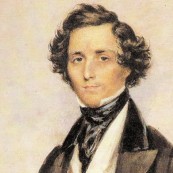

![Essential Organ [CD 1 of 2]](http://static.classicalm.com/repository/collection-cover/small/1307-img1359479519576972.jpg)
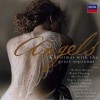
![Russian legends - Gidon Kremer [10 CD]](http://static.classicalm.com/repository/collection-cover/small/273-img1318873589669975.jpg)
![Russian legends - David Oistrakh [20 CD]](http://static.classicalm.com/repository/collection-cover/small/267-img1318418713553266.jpg)
![Russian legends - Viktor Tretiakov [6 CD]](http://static.classicalm.com/repository/collection-cover/small/271-img1318800770253179.jpg)
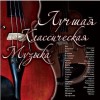
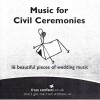

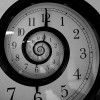

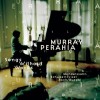
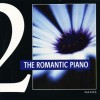
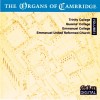
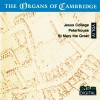
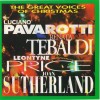
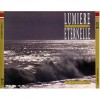
![The Top 100 Masterpieces of Classical Music 1685-1928 [CD5of10]](http://static.classicalm.com/repository/collection-cover/small/1357-img1372443663163006.jpg)
![The Top 100 Masterpieces of Classical Music 1685-1928 [CD6of10]](http://static.classicalm.com/repository/collection-cover/small/1358-img1372444971255802.jpg)

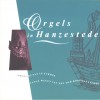
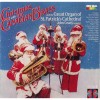
![Great European Organs. 57-David Briggs [St John The Evangelist London]](http://static.classicalm.com/repository/collection-cover/small/953-img1342423267509639.jpg)
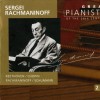
![Het Historische Orgel in Nederland [CD 17 of 20]](http://static.classicalm.com/repository/collection-cover/small/1013-img1343573407457997.jpg)

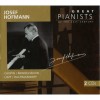
![Great European Organs. 63-Nicolas Kynaston [Megaron, Athens Concert Hall]](http://static.classicalm.com/repository/collection-cover/small/965-img1342703754192433.jpg)
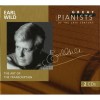
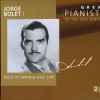
![Great European Organs. 01-Stephen Cleobury [King's College Cambridge]](http://static.classicalm.com/repository/collection-cover/small/841-img1340482259132910.jpg)

![Het Historische Orgel in Nederland [CD 12 of 20]](http://static.classicalm.com/repository/collection-cover/small/1003-img1343477080386894.jpg)
![12 Organs of Edinburgh [CD 2 of 2]](http://static.classicalm.com/repository/collection-cover/small/767-img1339685109419951.jpg)
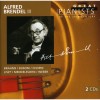
![Great European Organs. 03-Graham Barber [Bolton Town Hall]](http://static.classicalm.com/repository/collection-cover/small/845-img1340485309529347.jpg)
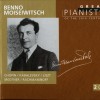
![Het Historische Orgel in Nederland [CD 14 of 20]](http://static.classicalm.com/repository/collection-cover/small/1007-img1343562180525462.jpg)
![Art of Organ Building - Van den Heuvel organs (various) [CD 1 of 2]](http://static.classicalm.com/repository/collection-cover/small/785-img1339955940346442.jpg)
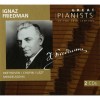
![Great European Organs. 05-James Lancelot [Durham Cathedral]](http://static.classicalm.com/repository/collection-cover/small/849-img1340530226510115.jpg)
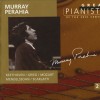
![Het Historische Orgel in Nederland [CD 16 of 20]](http://static.classicalm.com/repository/collection-cover/small/1011-img1343570867655146.jpg)
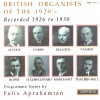
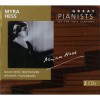
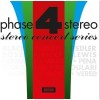


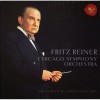
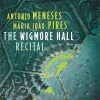
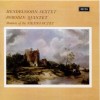
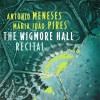

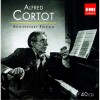
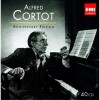
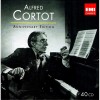
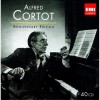
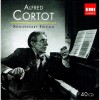
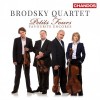
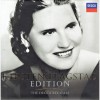
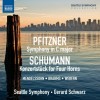
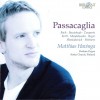
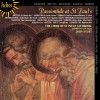
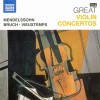
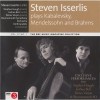
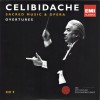
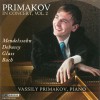
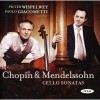
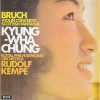
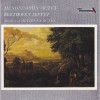
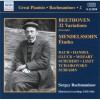
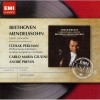
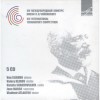
![Martha Argerich Edition: Chamber Music [CD5of8]](http://static.classicalm.com/repository/disk-cover/small/3573-img1403959269319066.jpg)
![Martha Argerich Edition - Solos & Duos [CD3of6]](http://static.classicalm.com/repository/disk-cover/small/3583-img1404478918553770.jpg)
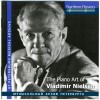
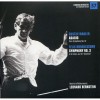
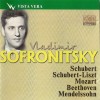
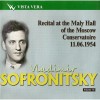
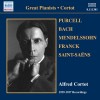
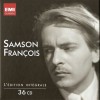
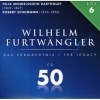


![Cecilia Bartoli – Sospiri [CD 1 of 2]](http://static.classicalm.com/repository/disk-cover/small/3053-img1375437402204202.jpg)
![Pablo Casals - The Complete Published EMI Recordings (1926 - 1955) [CD7of9]](http://static.classicalm.com/repository/disk-cover/small/3592-img1404564025494971.jpg)
![Pablo Casals - The Complete Published EMI Recordings (1926 - 1955) [CD9of9]](http://static.classicalm.com/repository/disk-cover/small/3594-img1404566163886690.jpg)

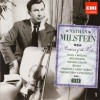
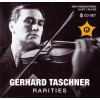
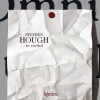
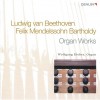
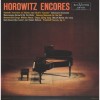
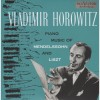
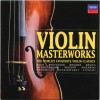
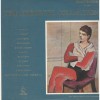
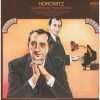
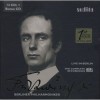
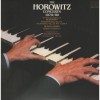
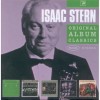
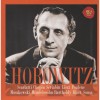
![Martha Argerich - The Collection 2 - The Concerto Recordings [CD3of7]](http://static.classicalm.com/repository/disk-cover/small/3564-img1403954292822490.jpg)
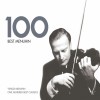
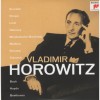
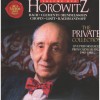
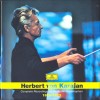
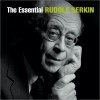
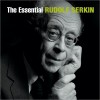
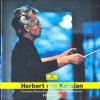
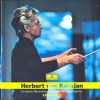
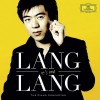
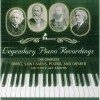
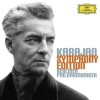
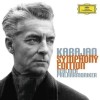
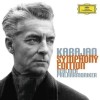
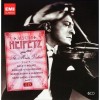
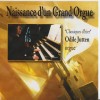
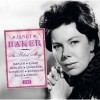
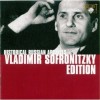
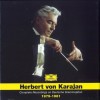
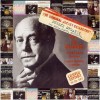
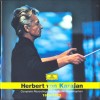
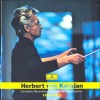
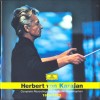
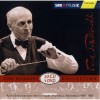
![Arthur Grumiaux - Philips Recordings 1955-1978 [CD 5 of 6]](http://static.classicalm.com/repository/disk-cover/small/3381-img1392035974793367.jpg)
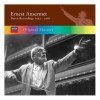


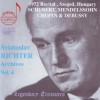
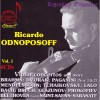
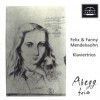
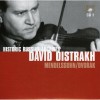
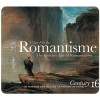
![Anthology of the Royal Concertgebouw Orchestra: Live the Radio Recordings 1960-1970 [CD9]](http://static.classicalm.com/repository/disk-cover/small/3446-img1395223793797033.jpg)
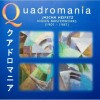
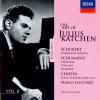
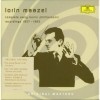
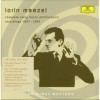
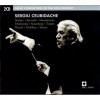
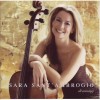
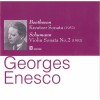
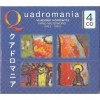
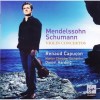

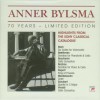
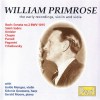
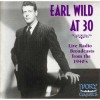
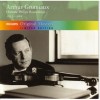
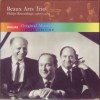
![Casals Festivals at Prades [CD12 of 13]](http://static.classicalm.com/repository/disk-cover/small/3630-img1404999826723691.jpg)
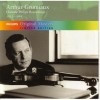
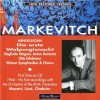
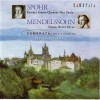
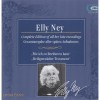
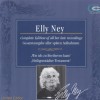
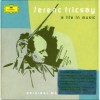
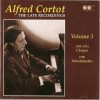
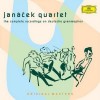
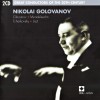
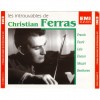
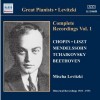
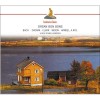
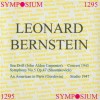
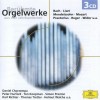


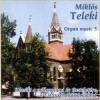
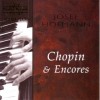
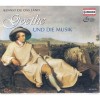
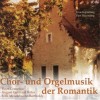
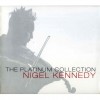
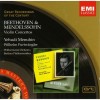
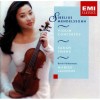
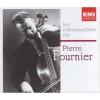
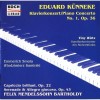
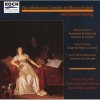
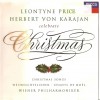
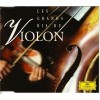
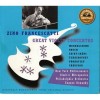
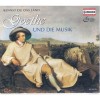
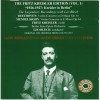
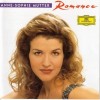
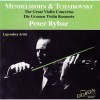
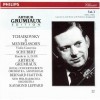
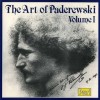
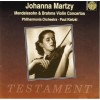
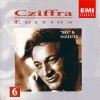
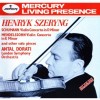
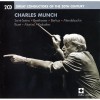
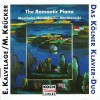
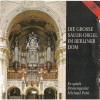
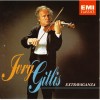

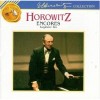
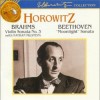
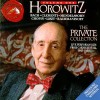
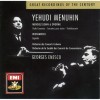
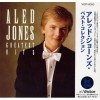
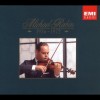
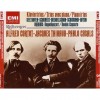
![The Great Violin Concertos (Menuhin Yehudi) [CD 2 of 3]](http://static.classicalm.com/repository/disk-cover/small/3060-img1375715588733664.jpg)
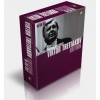
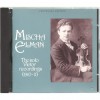
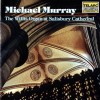
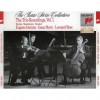
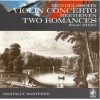
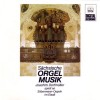
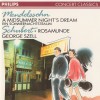
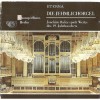
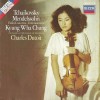
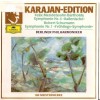
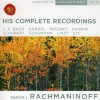
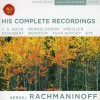
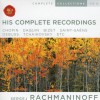
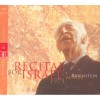
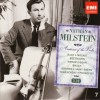
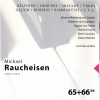
![The Complete Josef Hofmann, Volume 2 [2 CD]](http://static.classicalm.com/repository/disk-cover/small/827-img1316005912356728.jpg)
![The Complete Josef Hofmann, Volume 3 [2 CD]](http://static.classicalm.com/repository/disk-cover/small/829-img1316006934873331.jpg)
![The Complete Josef Hofmann, Volume 5 [2 CD]](http://static.classicalm.com/repository/disk-cover/small/833-img1316020224372818.jpg)
![The Complete Josef Hofmann, Volume 8 [2 CD]](http://static.classicalm.com/repository/disk-cover/small/839-img1316026485683685.jpg)
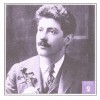
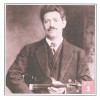
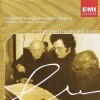
![Richter in Hungary, Volume 5 [2 CD]](http://static.classicalm.com/repository/disk-cover/small/885-img1316383729144080.jpg)
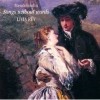
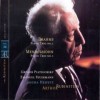
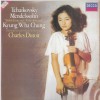
![The Heifetz Collection, Volumes 11 - 15 [5 CD]](http://static.classicalm.com/repository/disk-cover/small/939-img1317071875601277.jpg)

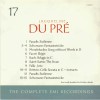
![The Heifetz Collection, Volume 18 [3 CD]](http://static.classicalm.com/repository/disk-cover/small/945-img1317246561169536.jpg)
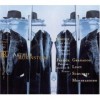
![The Heifetz Collection, Volume 1 [3 CD ]](http://static.classicalm.com/repository/disk-cover/small/715-img1315088819334029.jpg)
![The Heifetz Collection, Volume 2 [3 CD]](http://static.classicalm.com/repository/disk-cover/small/717-img1315129517717299.jpg)
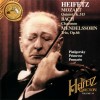
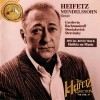
![The Heifetz Collection, Volume 6 [2 CD]](http://static.classicalm.com/repository/disk-cover/small/725-img1315427995644122.jpg)
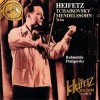
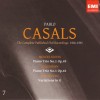
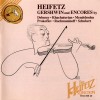
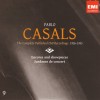
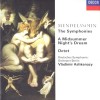
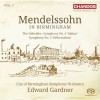
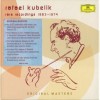
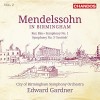
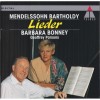
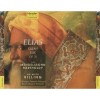
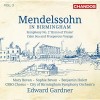
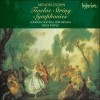
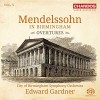
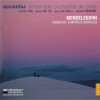
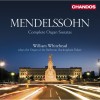
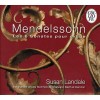

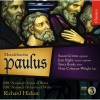
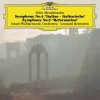
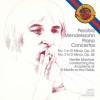
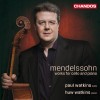
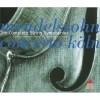
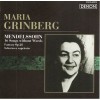
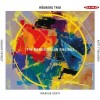
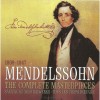
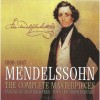
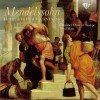
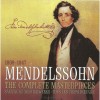
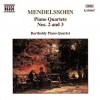
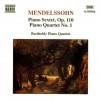
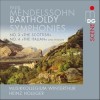
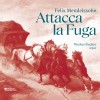
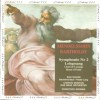
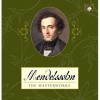
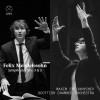
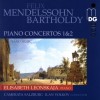
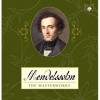
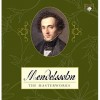
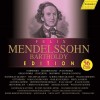
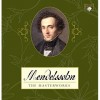
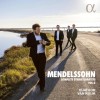
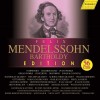
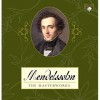
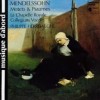
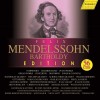
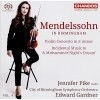
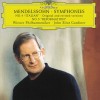
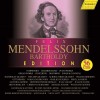

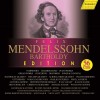

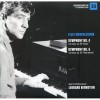
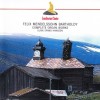
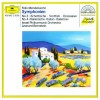
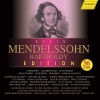
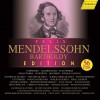

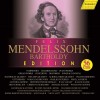

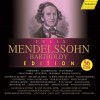
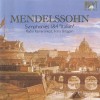
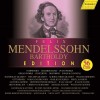
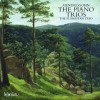
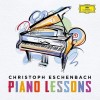
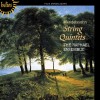

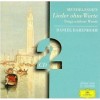
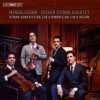
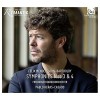
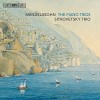
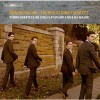
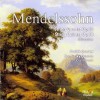
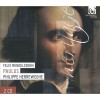
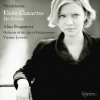
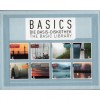
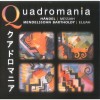
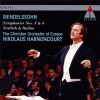
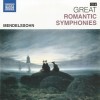
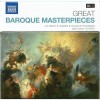
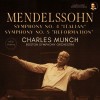
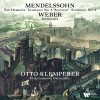
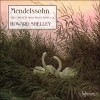
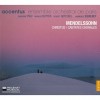
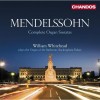
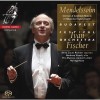
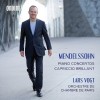
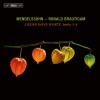
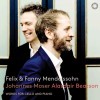

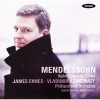
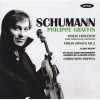
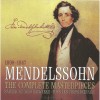
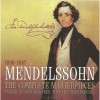
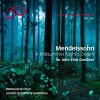
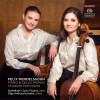
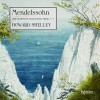
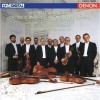

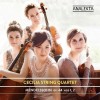
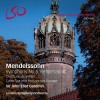
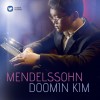
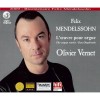
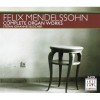
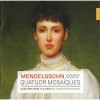
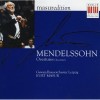
![Mendelssohn - The Masterworks [Brilliant Classics] CD 01-03 The Symphonies](http://static.classicalm.com/repository/composition-cover/small/42082-img1616124558322431.jpg)
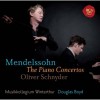

![Mendelssohn - The Masterworks [Brilliant Classics] CD 04-07 String Symphonies - Masur](http://static.classicalm.com/repository/composition-cover/small/42083-img1616125138247950.jpg)
![Mendelssohn - The Masterworks [Brilliant Classics] CD 08-11 Concertos](http://static.classicalm.com/repository/composition-cover/small/42086-img1616129528777112.jpg)
![Mendelssohn - The Masterworks [Brilliant Classics] CD 12-15 Elias, Paulus](http://static.classicalm.com/repository/composition-cover/small/42087-img1616167707822447.jpg)
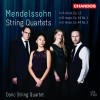
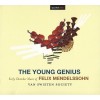
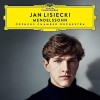
![Mendelssohn - The Masterworks [Brilliant Classics] CD 16-25 Chamber Music](http://static.classicalm.com/repository/composition-cover/small/42088-img1616168971448572.jpg)
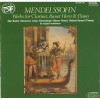
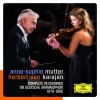
![Mendelssohn - The Masterworks [Brilliant Classics] CD 26-35 Choral Works](http://static.classicalm.com/repository/composition-cover/small/42089-img1616170854175139.jpg)
![Mendelssohn - The Masterworks [Brilliant Classics] CD 36-40 Others](http://static.classicalm.com/repository/composition-cover/small/42090-img1616172911179123.jpg)
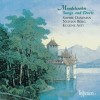
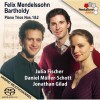
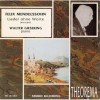

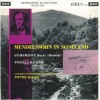
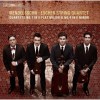
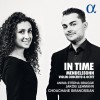
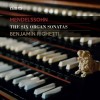
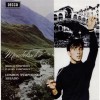
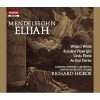

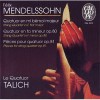
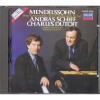
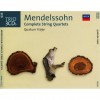
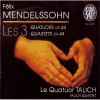
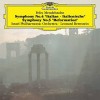
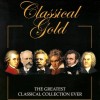
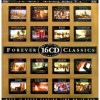
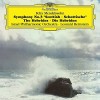

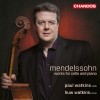
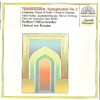
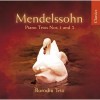
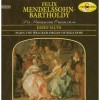
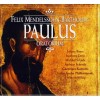
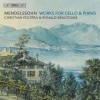
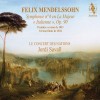
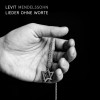
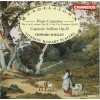
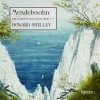
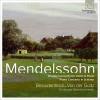
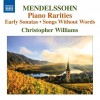
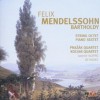

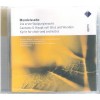
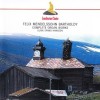
![Cleveland Quartet - Mendelssohn (1977) [24-192]](http://static.classicalm.com/repository/composition-cover/small/45983-img1707319553525697.jpg)



